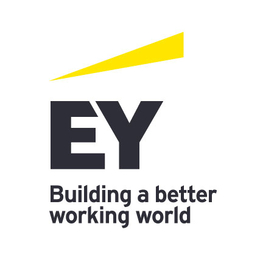
How Will AI Bots Change the Way We Buy Consumer Products? I Shop, You Buy?
Today I can go and buy toothpaste or go and shop for some. Whichever way I describe it, the activity is the same. Maybe the only difference would be whether I get my toothpaste online or in the “real world.” But in the near future, I think the words buying and shopping will begin to describe very different activities.
‘Buying’ won’t take up much of our time or attention. Today, I can tell a device on my kitchen counter to add toothpaste to my virtual shopping list. How long will it be until I trust artificial intelligence (AI) to curate a selection of product choices for me? I’d be happy for it to buy a lot of the mundane products that I don’t really want to think about. Which would likely include most of the consumer goods I use.
My AI platform of choice would become an entry point to a broader ecosystem of products, services, transactions, payment and fulfillment. It would know me well enough to evaluate what products or services I need and when. It won’t just find me the best deal on price; it will source brands and suppliers that reflect my values.
This kind of AI activity can sound a little intrusive to some people. To be sure, besides my children directing Siri to do all sorts of things, I'm personally not yet there. Somehow, I don't have time to get organized with a bot despite its promise to save me time! But 47% of consumers already say they are open to the idea of buying items through a chatbot. And almost half of U.S. consumers say they are willing to share personal information if it gets them a better deal, according to HubSpot Research.
As buying becomes more automated, shopping will evolve, too. Over time, we’ll become completely disengaged from most of the products and services we buy and super-engaged with a few. These brands will help us express and shape our identities and give us an amazing experience. They are the ones we will consciously “shop” with.
This divergence between buying and shopping is one of eight future hypotheses that EY has developed as part of our FutureConsumer.Now program. Each one relates to a key aspect of the future consumer: from how people will shop, eat and stay healthy to how they will live, use technology, play, work and move.
These hypotheses are not predictions about what will happen. The value is in taking them as a probable direction of travel and then seeing what kind of different worlds they might create. How they play out in reality will depend on many other factors — ranging from social attitudes to regulatory changes.
At our recent hackathon event in London, for example, we gave the buy/shop hypothesis to a team of business leaders, futurists and EY people. They used it to model a world in which consumers fully embraced the idea of AI-driven buying because they valued their time more than money. In the world they imagined, people earned social capital by engaging with brands and acting as ambassadors for some. They could trade this capital for benefits. And with a clearer understanding of the value of their personal data, they would negotiate with brands to realize its value.
AI-buying would free up time for them to “shop” with the few brands they felt really connected to, but they’d expect this shopping to be an integral part of the virtual/augmented reality they spent more of their time in.
Brands that wanted to engage with these consumers would have to build end-to-end ecosystems with alliance partners and technology platforms so they could fit seamlessly into the consumer’s world.
At our Berlin hackathon, the same hypothesis helped to shape a very different world. Here an equally diverse team of future-thinkers modeled a world in which consumers consciously limited what they owned. Instead, they increasingly subscribed to services that helped them live a fluid, on-demand lifestyle.
Because they were asset-light, they could take advantage of their freedom to live and work how and where they chose. Their lives become more virtual and more global, and they expected to feel “at home” wherever they happened to be. They wanted relevant, contextual products and services that matched their immediate needs and frictionless, continuous access to their favored services and experiences.
This split between buying and shopping will be a huge paradigm shift. The majority of consumer products would become commoditized and the face of retail will change forever. How would this change affect how and where consumer-facing companies create and capture value? What does it mean for your business now? There’s value for companies on both sides of the buy/shop divide. The key is to react early.
Learn more here about the #FutureConsumerNow.
The views reflected in this article are the views of the author and do not necessarily reflect the views of the global EY organization or its member firms.
Kristina is a partner and the global leader responsible for the Consumer Products & Retail (CP&R) sector, in which she is responsible for defining and implementing the EY strategy for CP&R and for ensuring that EY’s global clients are well served across geographies. Areas of focus include new concept and offer development, market entry strategy, strategic category management, profitable growth planning, strategic marketing, and market evolution planning in both the B2C and B2B marketplaces in developed and emerging economies.



